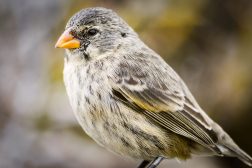Dam
1. A female parent; used of beasts, especially of quadrupeds; sometimes applied in contempt to a human mother. Our sire and dam, now confined to horses, are a relic of this age (13th century) . . . .Dame is used of a hen; we now make a great difference between dame and dam. (t. L. K. Oliphant) The dam runs lowing up end down, Looking the way her harmless young one went. (Shak)
2. A kind or crowned piece in the game of draughts.
Origin: oe. Dame mistress, lady; also, mother, dam. See dame.
1. A barrier to prevent the flow of a liquid; especially, a bank of earth, or wall of any kind, as of masonry or wood, built across a water course, to confine and keep back flowing water.
2. (Science: chemistry) a firebrick wall, or a stone, which forms the front of the hearth of a blast furnace. Dam plate, an iron plate in front of the dam, to strengthen it.
Origin: akin to OLG, D, & dan. Dam, g. & Sw. Damm, Icel. Dammr, and as. Fordemman to stop up, goth. Faordammjan.
Dictionary > Dam
You will also like...

Temperature Regulation in Animals
This tutorial elucidates body temperature regulation. Know the details here to learn how the body sets the body temperat..

Darwin and Natural Selection
This tutorial investigates the genetic diversity in more detail. It also delineates how certain alleles are favored over..

Sleep and Dreams – Neurology
While learning and intelligence are associated with the functions of a conscious mind, sleep and dreams are activities o..

Types and Causes of Brain Damage
This tutorial describes the different types and causes of brain damage. Find out how genetics, physical injury, lack of ..

The Central Nervous System
Myelin sheath is essential for a faster conductivity of signals. Know more about this feature of some neurons in the Cen..

Non-Mendelian Inheritance
In this tutorial, find out more about certain types of inheritance that does not follow the Mendelian inheritance patter..

